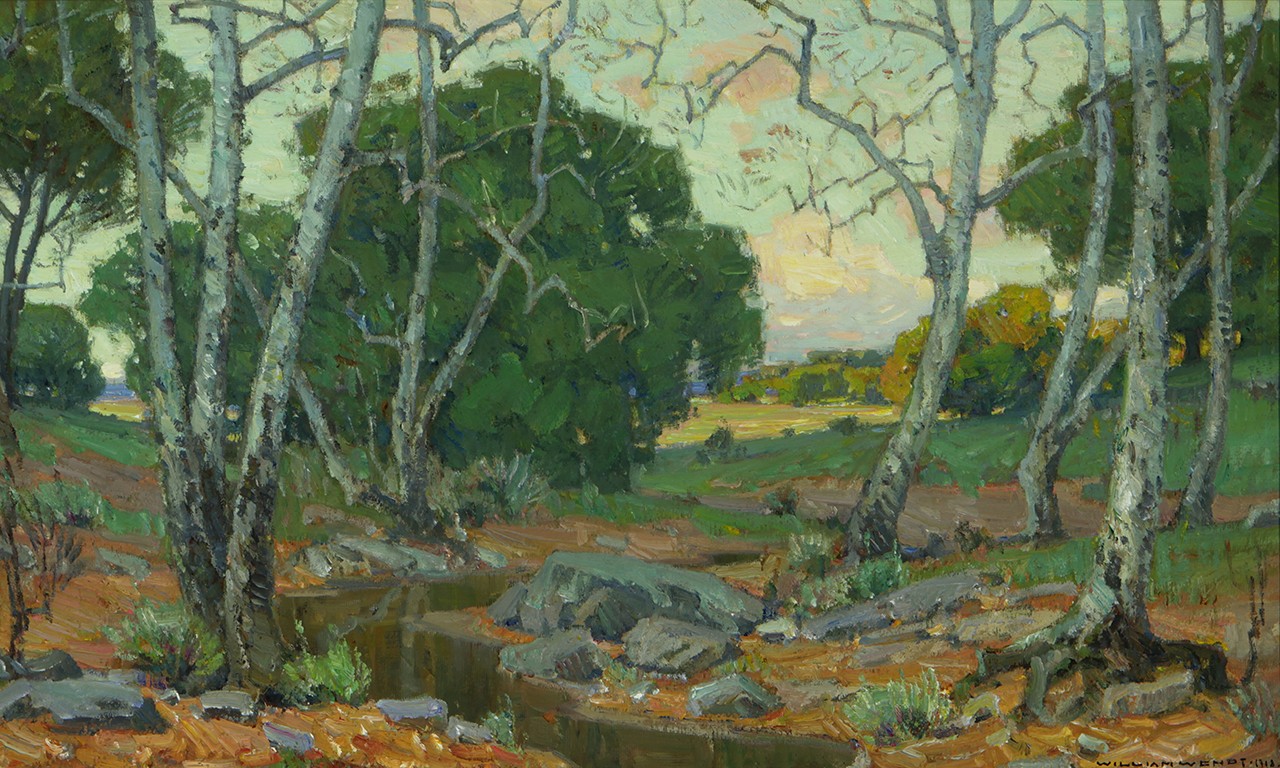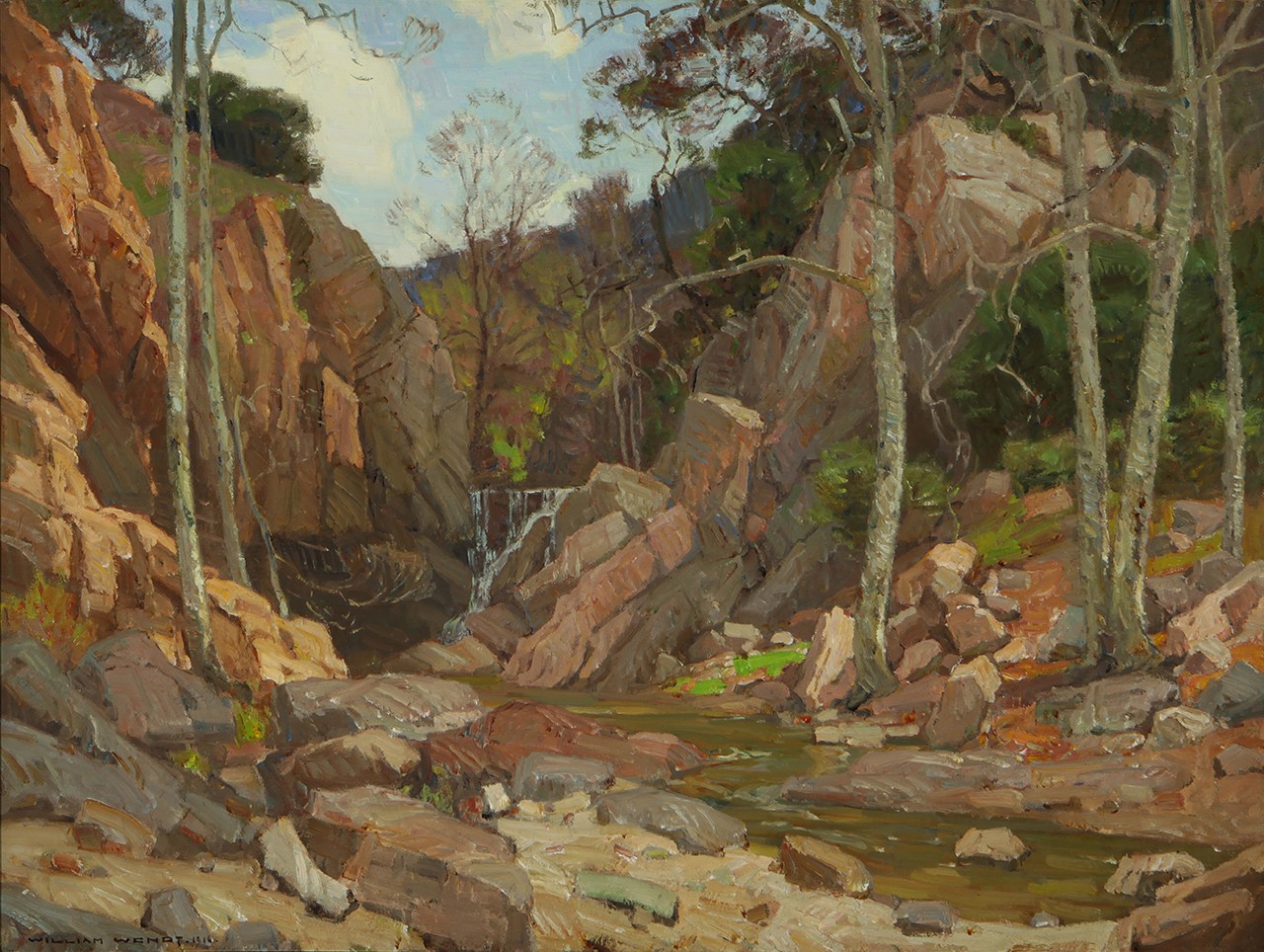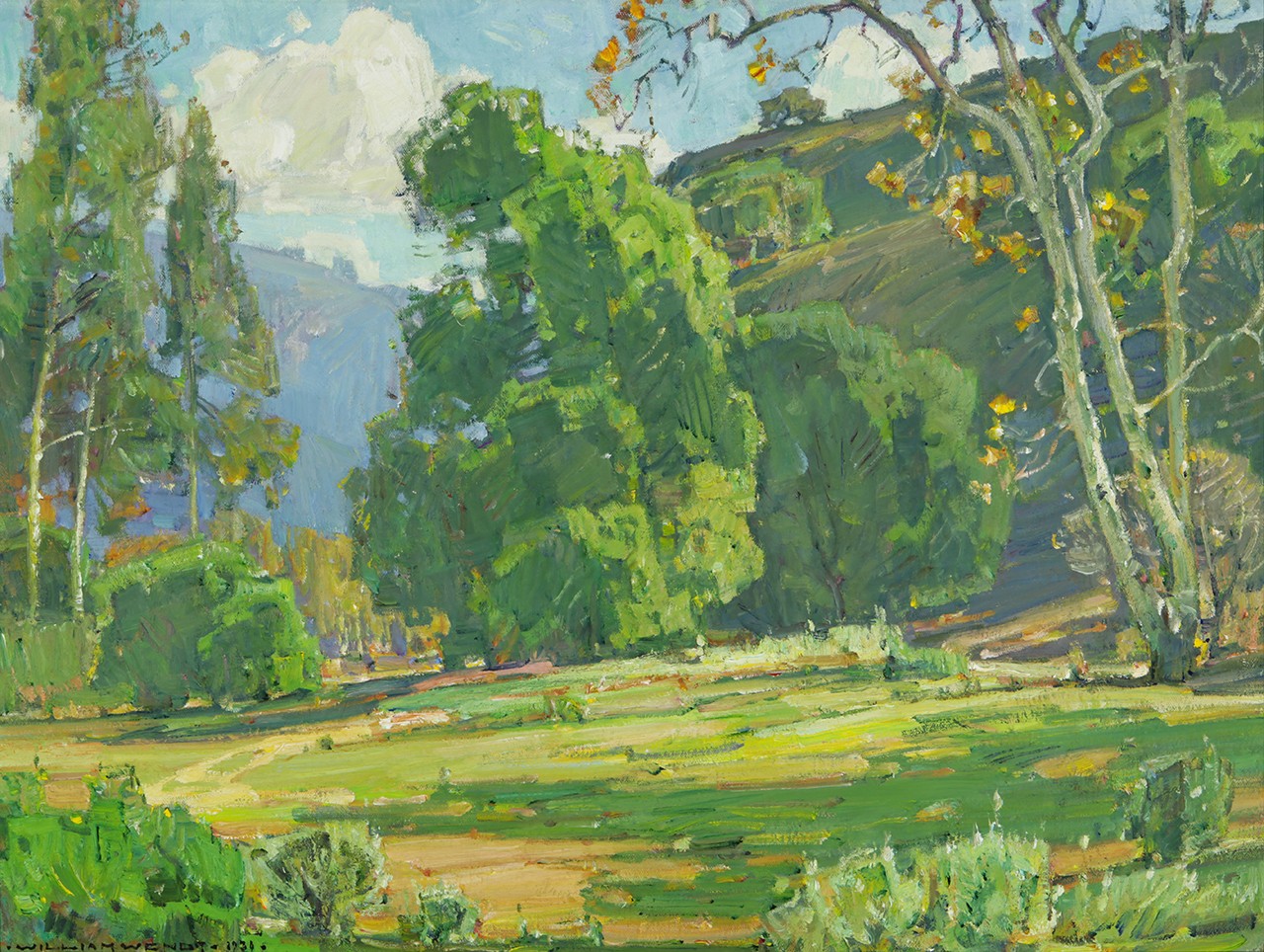William Wendt: Transcendentalist
 |
| Sycamores, 1918 William Wendt (American, 1865-1946) Oil on canvas; 26 3/4 x 42 3/4 x 2 1/4 in. F7678 Martha C. Stevens Memorial Art Collection |
Transcendental State of Mind
The great transcendentalists had come and gone by the time the William Wendt first arrived in California with a brush in hand and love of nature in heart and began painting this golden land’s meandering sycamores and bone-dry creek beds. The man who would become perhaps the most important Southern California Impressionist painter captured many locales throughout his life, but California’s climate and resulting palette met his style handsomely. Living the transcendental lifestyle in this frontier state was Wendt’s preferred mode of being, and is a truth which pervades every aspect of his art. The Bowers Museum was fortunate to receive a large group of his paintings as part of the Martha C. Stevens Memorial Art Collection. This post takes a closer look at the artist’s life and looks at four of the works in this donation.
 |
| Looking Up the Canyon, 1916 William Wendt (American, 1865-1946) Oil on canvas; 39 1/2 x 49 1/2 x 2 1/2 in. F7689 Martha C. Stevens Memorial Art Collection |
Prussian Around
William Wendt’s 1946 obituary in the LA Times is the only known source for information on his hometown and incorrectly attributes it to Bentzen, a nonexistent town in northern Prussia. What we do know is that he was born in 1865 and spent much of his first 15 years apprenticing to be a cabinetmaker. Feeling unfulfilled in his cabinet position, however, Wendt emigrated to Chicago in 1880. The only professional training he received in his career began shortly thereafter when he studied at the Art Institute of Chicago. It was during his time there and later working as a staff artist that he got to know George Gardner Symons who would become a repeat travel companion and another of most important early Californian painters. Together the duo made their first trip to California in 1894.
 |
| William and Julia Wendt, c. 1920 Unknown Photographer; Laguna Beach, California Ink on paper; 9 1/2 × 7 1/2 in. 36167.1 Gift of Mr. and Mrs. C.A. Worsley |
Eureka!
While it would be easy to say that Wendt fell in love with California at first sight, in truth California’s courtship of Wendt was a lengthy process of enamoring him trip by trip. Wendt’s eventual wife Julia Bracken might have appreciated this parallel when at the age of 41 William finally married her and asked her to move out west with him. The year was 1906. The newlyweds settled in Los Angeles with William painting and Julia, who was a herself a famous sculptor, practicing her craft. As often as Wendt had the chance, he bivouacked through the Southland’s golden hills painting and sketching en plein air. When he returned to his studio, he enlarged his sketches on grand canvases, collected his mail, brought new paintings to his dealer and began planning his next journey into nature.
 |
| Untitled, 1910 William Wendt (American, 1865-1946) Oil on canvas; 14 x 18 in. F7707 Martha C. Stevens Memorial Art Collection |
Dean Wendt
Over his tenure in California, Wendt became more than just a painter. Despite being a quiet man, he was one of the most prominent advocates for the arts in California. Beginning in 1911 he helped found the California Art Council and served as the President for the next half dozen years. In 1918 he moved to Laguna Beach and became a pivotal member of the burgeoning art colony there. For his various roles in mentoring new generations of California painters—a result of Wendt living much longer than many of his plein air contemporaries—he earned himself the title “dean of Southern California painters.”
 |
| Trees, They Are My Friends, 1936 William Wendt (American, 1865-1946) Oil on canvas, Framed: 32 1/2 x 40 1/2 in. F7685 Martha C. Stevens Memorial Art Collection |
Ent-icing Friends
Perhaps the most noteworthy of Wendt’s Bowers paintings is titled, Trees, They Are My Friends. While the wildly obscure play Antichrist, written in 1912 by a Vancouverite named James Orman Gray, does include the exact phrase “trees; they are my friends” in the midst of its larger story about gunslinging figures of Grecian myth and history, it is likelier that Wendt’s titling convention was a purely coincidental result of his relationship with nature which had started at a young age. His first job working in Chicago was as a commercial artist where he spent six of the week’s seven days indoors mass-producing paintings as part of a human assembly line. On the seventh day he traveled to what little untamed Illinois he could find to paint landscapes. Having grown up in another country entirely and being somewhat late to transcendentalism, there is no way of knowing if Wendt was familiar with its most famous authors, but it was as true for Wendt as it for Henry David Thoreau or Ralph Waldo Emerson that nature was a temple he worshipped in, a muse, and an old friend. Though Wendt was by all accounts a kind and humorous man, he was quiet and of few words. He described city life as “soul-destroying” and admitted to regularly suffering from bouts of melancholy. Perhaps trees seemed truer companions to him than even the partners in painting he brought to join him in the great outdoors.
Text and images may be under copyright. Please contact Collection Department for permission to use. References are available on request. Information subject to change upon further research.
Comments